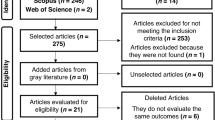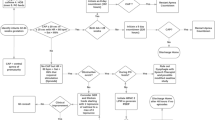Abstract
Objective:
Supine sleep positioning (SSP) has been shown to reduce the risk of sudden infant death syndrome (SIDS) and preterm infants are at higher risk for SIDS. Population-based estimates of SSP are lacking for the preterm population. The objectives of this study are: (1) compare the prevalence of SSP after hospital discharge for preterm and term infants in the United States; and (2) assess racial/ethnic disparities in SSP for preterm and term infants.
Study Design:
We analyzed the 2000 to 2011 data from the Pregnancy Risk Assessment Monitoring System of Centers for Disease Control and Prevention from 35 states. We measured prevalence of SSP by preterm and term gestational age (GA) categories. We calculated adjusted prevalence ratios (APR) to evaluate the likelihood of SSP for each GA category compared with term infants and the likelihood of SSP for non-Hispanic black (NHB) and Hispanic infants compared with non-Hispanic white (NHW) infants.
Results:
Prevalence of SSP varied by GA: ⩽27, 59.7%; 28 0/7 to 33 6/7, 63.7%; 34 0/7 to 36 6/7 (late preterm), 63.6%; and 37 0/7 to 42 6/7 (term) weeks, 66.8% (P<0.001). In the adjusted analyses, late preterm infants were slightly less likely to be placed in SSP compared with term infants (APR: 0.96, confidence interval: 0.95 to 0.98). There were racial/ethnic disparities in SSP for all GA categories when NHB and Hispanic infants were compared with NHW infants.
Conclusions:
All infants had suboptimal adherence to SSP indicating a continued need to better engage families about SSP. Parents of late preterm infants and families of NHB and Hispanic infants will also require greater attention given their decreased likelihood of SSP.
This is a preview of subscription content, access via your institution
Access options
Subscribe to this journal
Receive 12 print issues and online access
$259.00 per year
only $21.58 per issue
Buy this article
- Purchase on Springer Link
- Instant access to full article PDF
Prices may be subject to local taxes which are calculated during checkout



Similar content being viewed by others
References
Murphy SL, Xu J, Kochanek KD . Deaths: final data for 2010. Natl Vital Stat Rep 2013; 61: 12–13.
Malloy MH . Prematurity and sudden infant death syndrome: United States 2005-2007. J Perinatol 2013; 33 (6): 470–475.
Willinger M, Hoffman HJ, Wu KT, Hou JR, Kessler RC, Ward SL et al. Factors associated with the transition to nonprone sleep positions of infants in the United States: the National Infant Sleep Position Study. JAMA 1998; 280 (4): 329–335.
Task Force on Sudden Infant Death Syndrome Task Force on Sudden Infant Death Syndrome, Moon RY . SIDS and other sleep-related infant deaths: expansion of recommendations for a safe infant sleeping environment. Pediatrics 2011; 128 (5): 1030–1039.
Colson ER, Rybin D, Smith LA, Colton T, Lister G, Corwin MJ . Trends and factors associated with infant sleeping position: the national infant sleep position study, 1993-2007. Arch Pediatr Adolesc Med 2009; 163 (12): 1122–1128.
Oyen N, Markestad T, Skaerven R, Irgens LM, Helweg-Larsen K, Alm B et al. Combined effects of sleeping position and prenatal risk factors in sudden infant death syndrome: the Nordic Epidemiological SIDS Study. Pediatrics 1997; 100 (4): 613–621.
Grazel R, Phalen AG, Polomano RC . Implementation of the American Academy of Pediatrics recommendations to reduce sudden infant death syndrome risk in neonatal intensive care units: an evaluation of nursing knowledge and practice. Adv Neonatal Care 2010; 10 (6): 332–342.
Vernacchio L, Corwin MJ, Lesko SM, Vezina RM, Hunt CE, Hoffman HJ et al. Sleep position of low birth weight infants. Pediatrics 2003; 111 (3): 633–640.
Colson ER, Willinger M, Rybin D, Heeren T, Smith LA, Lister G et al. Trends and factors associated with infant bed sharing, 1993-2010: the National Infant Sleep Position Study. JAMA Pediatr 2013; 167 (11): 1032–1037.
Murphy SL, Xu J, Kochanek KD . Deaths: final data for 2010. Natl Vital Stat Rep 2013; 61 (4): 1–117.
Shulman HB, Gilbert BC, Msphbrenda CG, Lansky A . The Pregnancy Risk Assessment Monitoring System (PRAMS): current methods and evaluation of 2001 response rates. Public Health Rep 2006; 121 (1): 74–83.
Bieler GS, Brown GG, Williams RL, Brogan DJ . Estimating model-adjusted risks, risk differences, and risk ratios from complex survey data. Am J Epidemiol 2010; 171 (5): 618–623.
Oehlert GW . A note on the delta method. Am Stat 1992; 46: 27–29.
Hirai AH, Sappenfield WM, Kogan MD, Barfield WD, Goodman DA, Ghandour RM et al. Contributors to excess infant mortality in the U.S. South. Am J Prev Med 2014; 46 (3): 219–227.
Centers for Disease Control and Prevention. Sudden unexpected infant death and sudden infant death syndrome. Available at: http://www.cdc.gov/sids/data.htm (accessed 20 January 2015).
Gelfer P, Cameron R, Masters K, Kennedy KA . Integrating "Back to Sleep" recommendations into neonatal ICU practice. Pediatrics 2013; 131 (4): e1264–e1270.
Hwang SS, O'Sullivan A, Fitzgerald E, Melvin P, Gorman T, Fiascone JM . Implementation of safe sleep practices in the neonatal intensive care unit. J Perinatol 2015; 35 (10):862–866.
Smith VC, Hwang SS, Dukhovny D, Young S, Pursley DM . Neonatal intensive care unit discharge preparation, family readiness and infant outcomes: connecting the dots. J Perinatol 2013; 33 (6): 415–421.
Colson ER, Levenson S, Rybin D, Calianos C, Margolis A, Colton T et al. Barriers to following the supine sleep recommendation among mothers at four centers for the Women, Infants, and Children Program. Pediatrics 2006; 118 (2): e243–e250.
Acknowledgements
The findings and conclusions in this report are those of the authors and do not necessarily represent the official position of the Centers for Disease Control and Prevention.
Author information
Authors and Affiliations
Corresponding author
Ethics declarations
Competing interests
The authors declare no conflict of interest.
Additional information
Supplementary Information accompanies the paper on the Journal of Perinatology website
Supplementary information
Rights and permissions
About this article
Cite this article
Hwang, S., Smith, R., Barfield, W. et al. Supine sleep positioning in preterm and term infants after hospital discharge from 2000 to 2011. J Perinatol 36, 787–793 (2016). https://doi.org/10.1038/jp.2016.80
Received:
Revised:
Accepted:
Published:
Issue Date:
DOI: https://doi.org/10.1038/jp.2016.80
This article is cited by
-
Understanding the barriers and facilitators to safe infant sleep for mothers of preterm infants
Journal of Perinatology (2021)
-
Implementation of safe sleep practices in Massachusetts NICUs: a state-wide QI collaborative
Journal of Perinatology (2018)



